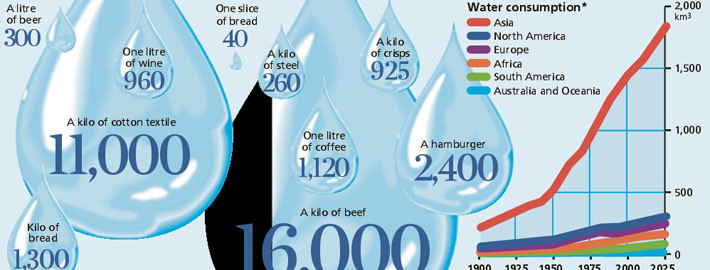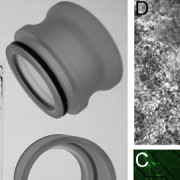Virtual Water
Food security, intended as the ability to meet the energy needs of the world population, is tightly linked with water availability, as the latter is essential for food production. According to FAO, an average of 1.000 to 2.000 liters of water is required to produce one kilo of wheat, and 13.000 to 15.000 liters to produce the same amount of meat. Thus, considering the water virtually embedded in commonly-eaten foods, one person consumes an average of 2.000 liters of water per day, approximately a thousand folds the daily requirement of drinking water per capita.
The international trade in food products allows to transfer “virtual water” from countries exporting food products to those importing them. About 2.000 billion cubic meters of virtual water are transferred each year through a network that connects more than 200 countries with 15.700 two-way relationships.
Nevertheless, there is a limited understanding of how virtual water trade affects food security.
The benefits of such indirect trade of water, for instance, could be negatively balanced by the lack of a system of shared rules defining the economic value of water resources and preventing the consequent over-exploitation of these resources in fragile socio-economical and environmental contexts.
The ViWaN project will address these issues with an innovative and interdisciplinary approach, which will lead to the understanding of the main drivers and implications of the international virtual water flows.
The main objectives are two: a better understanding of the global dynamics in virtual water flows via the international food trade network and the evaluation of the impact of such flows on food security.
LINV projets:
• The global virtual-water network: social, economic, and environmental implications – ViWaN
Bando FIRB – Programma “Futuro in ricerca”










